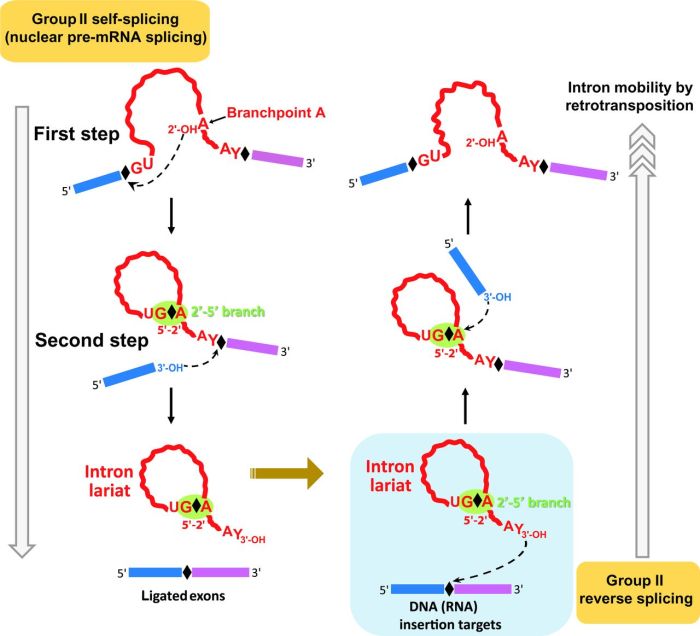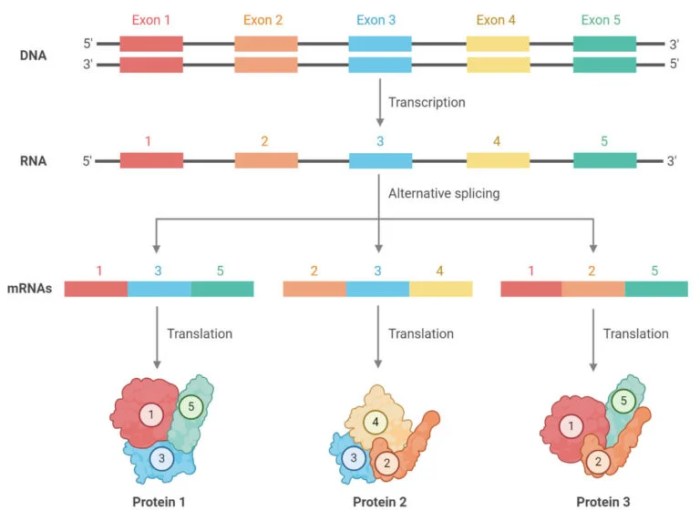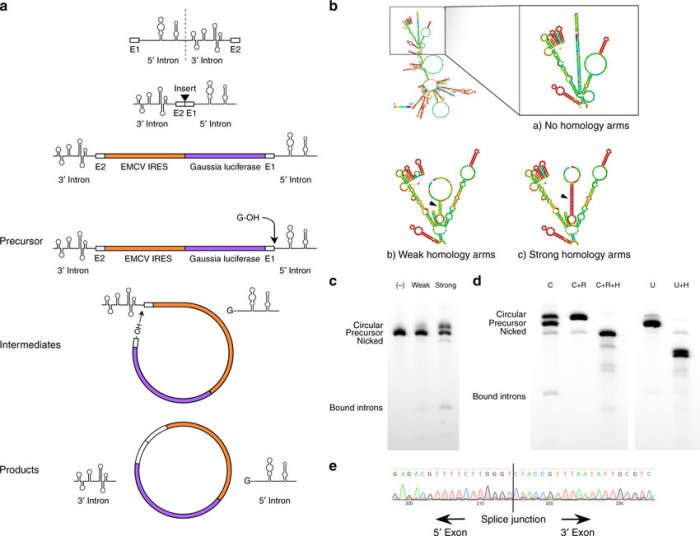During the splicing reaction the intron-exon junctions are recognized by – During the splicing reaction, the intron-exon junctions are recognized by a complex molecular machinery known as the spliceosome. This process is crucial for the accurate removal of introns and the joining of exons to produce mature mRNA. Understanding the mechanisms of intron-exon junction recognition is essential for comprehending gene expression and its regulation.
Introns, non-coding sequences within genes, are removed during splicing, while exons, coding sequences, are joined together to form the final mRNA transcript. The spliceosome, composed of small nuclear ribonucleoproteins (snRNPs) and other proteins, plays a central role in identifying the boundaries between introns and exons.
Introduction to Splicing Reaction

During gene expression, the process of splicing plays a crucial role in converting pre-messenger RNA (pre-mRNA) into mature mRNA. This process involves the removal of non-coding introns and the joining of coding exons, leading to the formation of a continuous open reading frame.
Pre-mRNA contains both introns and exons, with introns being non-coding regions that are removed during splicing. Exons, on the other hand, are the coding regions that are retained in the mature mRNA and translated into protein.
The splicing reaction is carried out by a large complex of proteins and RNA molecules called the spliceosome. The spliceosome accurately identifies the boundaries between introns and exons, facilitating the removal of introns and the joining of exons.
Recognition of Intron-Exon Junctions
The accurate identification of intron-exon boundaries is critical for proper splicing. This process involves the recognition of specific sequences at the splice sites, which are located at the boundaries between introns and exons.
The spliceosome, a large complex of proteins and RNA molecules, plays a central role in junction recognition. It contains small nuclear ribonucleoproteins (snRNPs) that recognize specific sequences at the splice sites and facilitate the assembly of the spliceosome at the correct location.
Mechanisms of Junction Recognition
The spliceosome recognizes intron-exon junctions through a combination of mechanisms involving consensus sequences and auxiliary splicing factors.
Consensus sequences are short, conserved sequences found at the splice sites. These sequences include the 5′ splice site (5’SS), the branch point sequence (BPS), and the 3′ splice site (3’SS).
Auxiliary splicing factors, such as SR proteins and hnRNPs, play a role in junction recognition by binding to specific sequences within the pre-mRNA and facilitating the assembly of the spliceosome.
Alternative Splicing and Junction Recognition
Alternative splicing is a process that allows a single gene to produce multiple protein isoforms by selectively including or excluding different exons during splicing.
The regulation of alternative splicing is crucial for the diversity of protein isoforms and is influenced by the recognition of specific splice sites. Splice sites can contain regulatory elements that control the inclusion or exclusion of exons, leading to the production of different protein isoforms.
Regulation of Splicing Junction Recognition
The recognition of intron-exon junctions is regulated by a variety of mechanisms, including RNA-binding proteins and other factors.
RNA-binding proteins, such as splicing factors and hnRNPs, can bind to specific sequences within the pre-mRNA and influence the assembly and positioning of the spliceosome.
Splicing patterns can also be influenced by cellular conditions and environmental cues, such as temperature, pH, and the presence of specific molecules.
Applications of Junction Recognition, During the splicing reaction the intron-exon junctions are recognized by
The understanding of intron-exon junction recognition has led to advancements in molecular biology, gene therapy, and drug development.
In gene therapy, the manipulation of splice sites can be used to correct genetic defects or introduce new therapeutic genes.
In drug development, the targeting of splice sites can be used to modulate gene expression and develop new therapies for a variety of diseases.
Clarifying Questions: During The Splicing Reaction The Intron-exon Junctions Are Recognized By
What is the significance of intron-exon junction recognition?
Accurate recognition of intron-exon junctions is crucial for the correct removal of introns and the precise joining of exons during splicing. This process ensures the production of mature mRNA transcripts that can be translated into functional proteins.
How do spliceosomes recognize intron-exon junctions?
Spliceosomes recognize intron-exon junctions through a combination of consensus sequences and auxiliary splicing factors. Consensus sequences are short, conserved sequences found at the boundaries of introns and exons. Auxiliary splicing factors, such as SR proteins and hnRNPs, bind to specific RNA sequences and help position the spliceosome at the correct splice sites.



